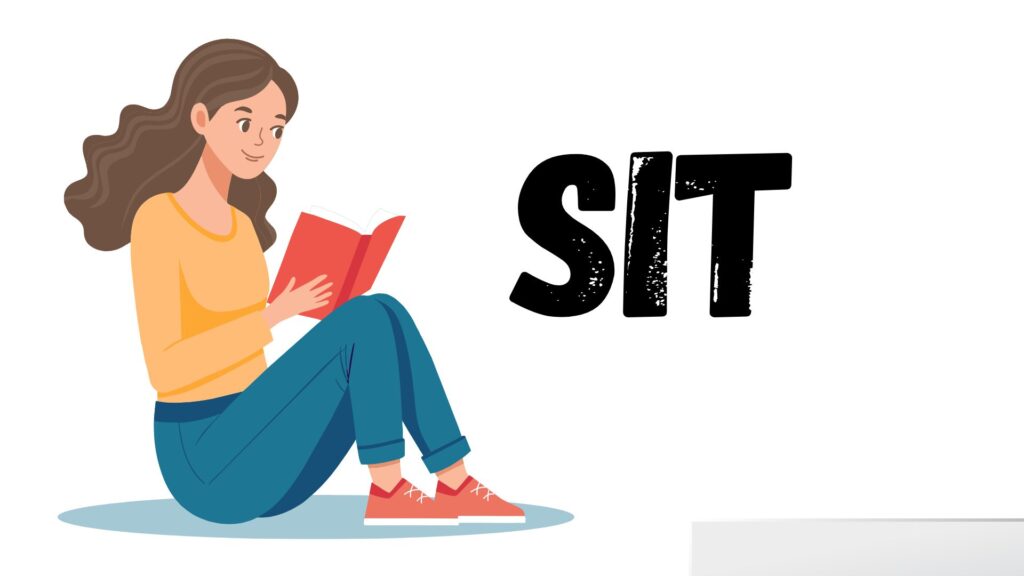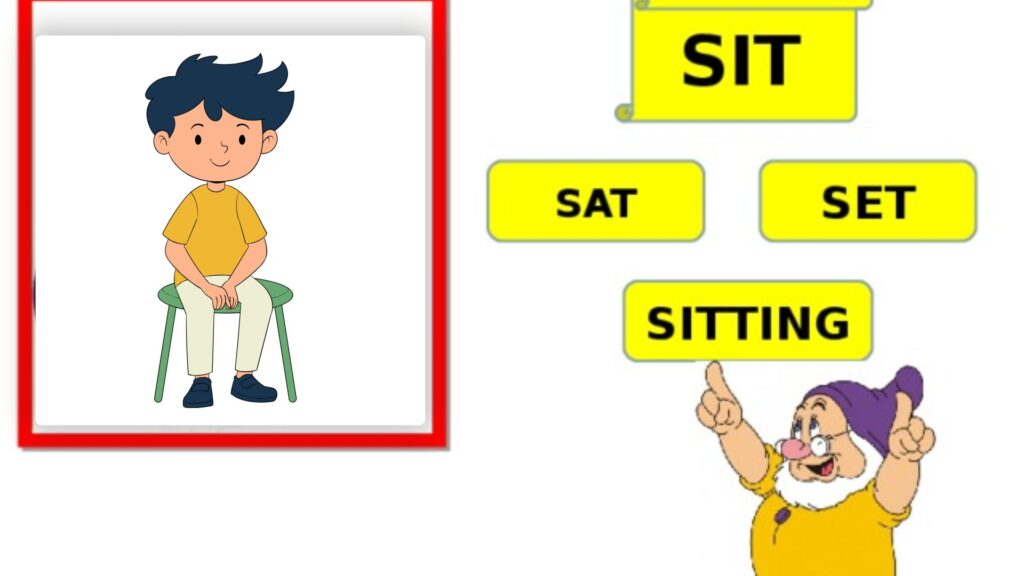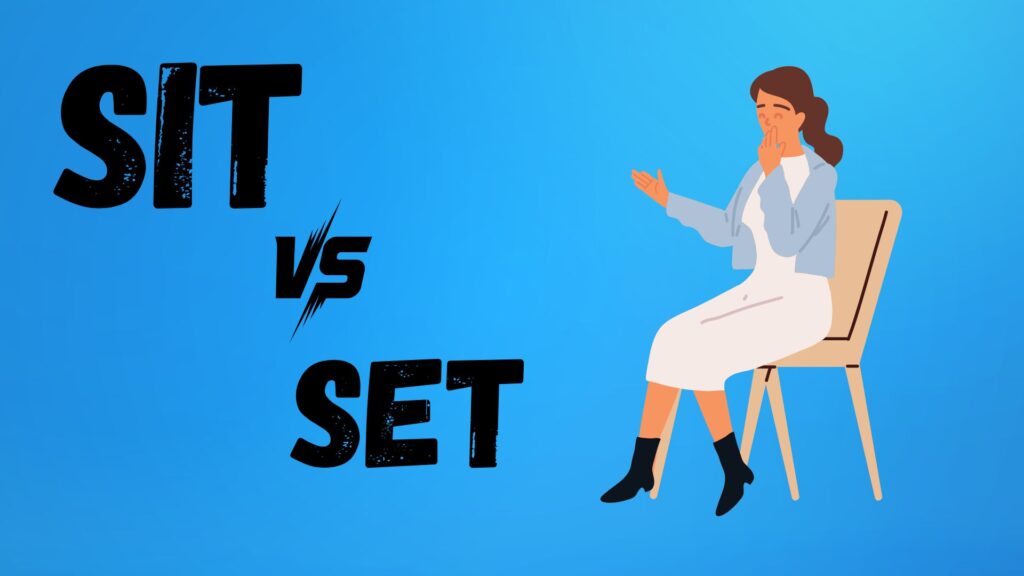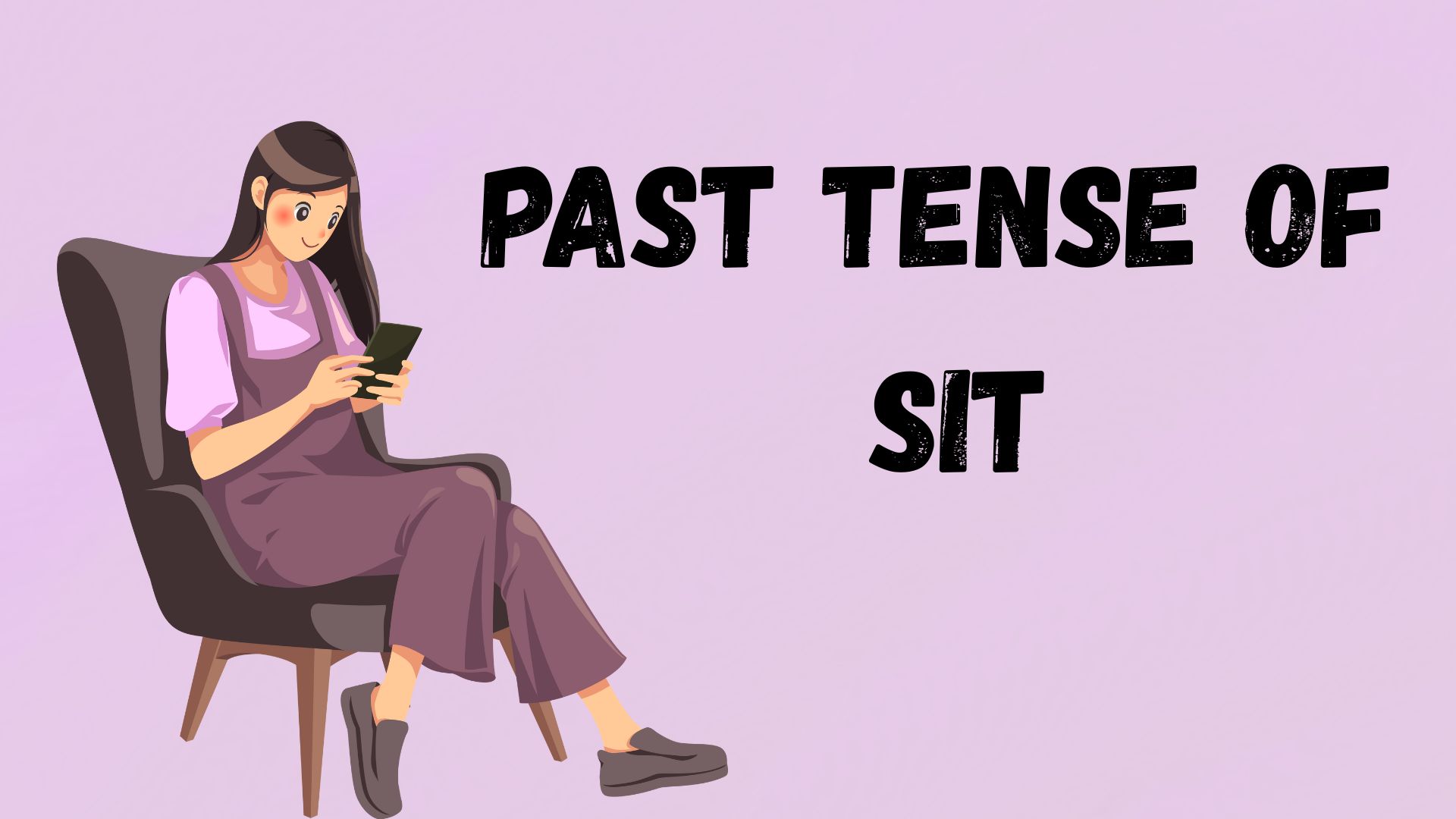If you’ve ever paused mid-sentence wondering whether to say sit or sat, you’re not alone. These two simple words are often misused even by native speakers. Whether you’re writing a professional email, telling a story, or trying to understand English verb irregularity, mastering the difference between sit and sat will instantly improve your grammar game.
Let’s break it down: present tense, past tense, idioms, and all.
Understanding the Verb “Sit”

The verb sit means “to be in a seated position” or “to rest with the body supported by the buttocks.” It’s an action verb and most often intransitive, meaning it doesn’t take a direct object.
📌 Present Tense: Sit
- I sit at my desk every morning.
- They sit near the window during meetings.
📌 Past Tense: Sat
- Yesterday, I sat beside Amanda at the training session.
- He sat in silence all evening.
Notice the past tense form: sat, not “sitted” (which is incorrect).
Sit vs. Sat: What’s the Difference?
In simple terms:
| Tense | Verb Form | Example |
|---|---|---|
| Present | sit | I sit in the front row. |
| Past | sat | I sat there yesterday. |
| Past Perfect | had sat | I had sat there for an hour. |
Sit is present.
Sat is past.
Had sat is past perfect.
💡 According to the Oxford English Dictionary (OED), “sat” comes from the Middle English form satte, tracing even further back to Old English sittan and Proto-Germanic sitjaną.
When Should You Use “Sat”?
Use sat when referring to an action that has already happened.
✅ Correct:
- She sat on the edge of her seat during the entire movie.
- We sat for hours waiting for the power to return.
❌ Incorrect:
- She sit on the chair yesterday.
- They have sit there since morning.
Instead, say:
- She sat on the chair yesterday.
- They have sat there since morning.
📧 Email Scenario:
Subject: Interview Feedback
Hi Jason,
Thank you for attending your interview yesterday. Our panel noted that you sat confidently throughout the session and engaged with thoughtful answers. We appreciate the professionalism you brought into the room.
Best regards,
Melissa Grant
HR Coordinator
What About “Had Sat”?
Had sat is the past perfect tense, used when talking about a past action that happened before another past action.
Example:
- She had sat through the entire lecture before the fire alarm went off.
Here, “had sat” indicates something was already completed by the time the next event (fire alarm) occurred.
Common Idioms Using “Sit”

English loves idioms, and sit happens to show up in quite a few. Here are some of the most colorful ones:
🪙 Sitting on a goldmine
- Meaning: In possession of something valuable but not realizing it.
- Example: You’re sitting on a goldmine with that vintage comic collection.
👀 Sit on the edge of your seat
- Meaning: Full of excitement or suspense.
- The thriller had me sitting on the edge of my seat the whole time.
🪑 Sit on the fence
- Meaning: Avoiding taking a side in a debate or argument.
- Stop sitting on the fence do you support the proposal or not?
🪞 Where you stand depends on where you sit
- Meaning: Perspective shapes opinion.
- In politics, remember that where you stand depends on where you sit.
🤷 You can’t sit in two chairs with one butt
- Meaning: You can’t chase two conflicting goals.
- Pick a focus you can’t sit in two chairs with one butt!
😔 Sit like a piffy on a rock cake (British informal)
- Meaning: Feeling left out or unnoticed.
- He sat like a piffy on a rock cake at the party while everyone danced.
Grammar Pitfall: Sit vs. Set

Another common confusion is between sit and set.
- You sit yourself down.
- You set something down.
| Verb | Subject/Action | Object? | Example |
|---|---|---|---|
| Sit | Person changes position | ❌ | I sit on the bench. |
| Set | Person moves an object | ✅ | I set the book on the table. |
Using “Sit” in Figurative Language
Using figurative language adds depth and creativity to your writing. “Sit” can symbolize stillness, reflection, patience or even tension.
🎨 Examples:
- Her words sat heavy in the air, unspoken but understood.
- They sat with their thoughts, unsure of what to say.
- The idea sat in his mind, growing louder by the minute.
These phrases show how language evolution allows physical actions like “sitting” to gain emotional weight over time.
How to Practice Correct Usage
Learning English grammar rules can be tricky, especially when dealing with irregular verbs like sit. Here are some quick tips:
- 🔁 Repeat in context: Use “sit” and “sat” in short stories or journal entries.
- 🔍 Read aloud: If it sounds wrong, it probably is.
- 📚 Use grammar resources: Sites like Phraseforges help you see word roots.
- 🧠 Practice with time markers: Yesterday = sat. Every day = sit. Before then = had sat.
Quick Grammar Quiz
Choose the correct form:
- He always ___ near the window.
A. sat
B. sit
✅ Correct: B. sit - Yesterday, we ___ in the front row.
A. sit
B. sat
✅ Correct: B. sat - She ___ there for an hour before anyone noticed.
A. had sat
B. has sit
✅ Correct: A. had sat
Final Thoughts: Which is Correct Sit or Sat?
In summary:
- Use sit for present actions
- Use sat for past actions
- Use had sat for past perfect
- Sprinkle in idiomatic expressions for color
- Avoid confusing sit with set
Understanding verb conjugation isn’t just about avoiding grammar mistakes it’s about expressing yourself clearly and confidently. Whether you’re writing an email, crafting a novel, or simply chatting with a friend, knowing when to use sit or sat ensures your message lands the way you intend.
**Now go ahead sit a spell, soak this in, and next time you write, you won’t have to second-guess yourself.

